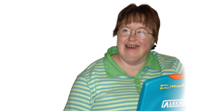|
Almost four out of every 1000 children born in the United States have cerebral palsy (CP), with the total economic burden to our society being nearly one million dollars per child. Despite years of studies that have catalogued the motor impairments seen in CP, this knowledge has not translated to innovative and effective interventions. At least part of the problem is that the majority of treatment approaches have focused on remedying the motor impairment deficits that may affect the execution of the movement pattern, without attention to other features of motor performance. This proposal aims to develop a new foundation for developing effective interventions by investigating an under-studied area; mainly, the planning of movement in children with CP. The aims of this proposal are a stepping-stone for our long-term goal of developing innovative treatment strategies that can maximize the ability of children with CP to learn new motor skills. To meet this goal, we have implemented an innovative approach that that uses magnetoencephalography (MEG) neuroimaging methods and neurobehavioral methods to identify the neural processes that serve motor planning and execution in children with CP. The Specific Aims of this proposal are (1) to quantify the differences in formulation and execution of the motor plan within the sensorimotor cortices of children with CP and typically-developing (TD) children as they perform an isometric knee-extension task, and (2) to determine the quantitative relationship between formulation and execution of the motor plan and performance of the knee joint in TD children and children with CP. In brevity, our study design consists of children with CP and TD children performing an isometric knee extension task at force levels between 5-30% of their maximum voluntary force, as we concurrently use MEG to evaluate neural oscillatory activity within the sensorimotor cortices during the motor planning and execution stages. The new knowledge generated from this proposal will provide a vital stepping-stone for our future investigations, which will use these cutting-edge neuroimaging techniques to assess if the type of feedback, training (e.g., blocked versus random), and/or motor imagery improves the motor planning and execution in children with CP. The knowledge generated from our proposed and future experiments has the potential to alter the current course of therapeutic trends that are used with children with CP. Upon completion of the proposed work in this application, we will be able to decisively state if there are motor planning deficits in children with CP, and if so estimate their potential impact on the execution of the motor command. Such findings will provide new insight on whether treatment approaches should focus on teaching children with CP new strategies for planning their movements.
|







